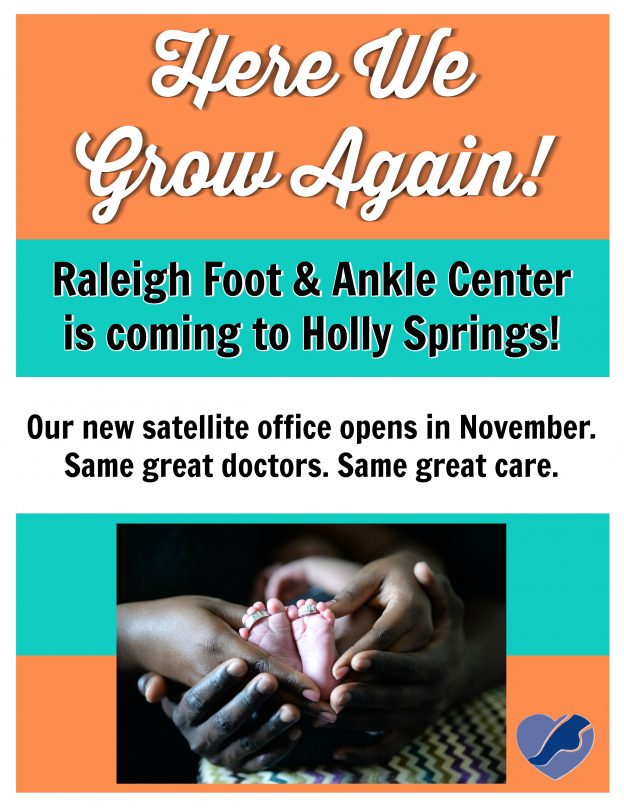Raleigh Foot & Ankle Center is pleased to announce the addition of its Holly Springs office in November 2018. The new state-of-the-art podiatry practice will open at 1004 Werrington Drive, Ste. 300 in Main Street Square along G.B. Alford Highway (Hwy 55). The practice will offer foot and ankle care for all ages. Services will include surgical and non-surgical treatment for skin and nail conditions, fractures, sprains, sports injuries, birth deformities, foreign bodies, diabetic foot care and disorders, pediatric conditions, nerve disorders, and wounds.
“Our vision is to serve the community by providing compassionate and progressive foot and ankle care for children, adolescents, and adults,” said Dr. Kirk Woelffer. “And our mission is to provide advanced care through a dedicated, well-trained healthcare team in a friendly, professional setting.”
“We offer the latest advances in technology to get you back on your feet quickly,” said Dr. Alan Boehm. “This includes digital x-rays, Extracorporeal Shockwave Therapy (ESWT), ultrasound, 3D scanning for custom molded orthotics, and laser therapy for toenail fungus.”
The Holly Springs office will also feature an onsite nail care salon with medically trained technicians who will perform podiatrist-supervised pedicures for patients, including those with diabetes.
Raleigh Foot & Ankle Center’s surgeons Dr. Kirk Woelffer, Dr. Alan Boehm, Dr. Jordan Meyers, bring over 35 years of trusted podiatry experience. They volunteer at Open Door Clinic, Alliance Medical Ministry, and Project Homeless Connect.
“Holly Springs has seen a tremendous amount of growth, with little increase in available foot and ankle care,” said Dr. Jordan Meyers. “Making time to go to the doctor is challenging enough, so we are excited to provide advanced foot and ankle care a little closer to home for all the great people in Holly Springs and its surrounding areas. This also provides an opportunity for us to not only offer great medical care, but contribute and give back to the community through various avenues of charitable work.”
Raleigh Foot & Ankle Center plans to open the Holly Springs satellite office on November 12, 2018. For more information call (919) 850-9111 or visit www.RaleighFootAndAnkleCenter.com. Raleigh Foot & Ankle Center is a division of Foot & Ankle Specialists of the Mid-Atlantic, LLC.




